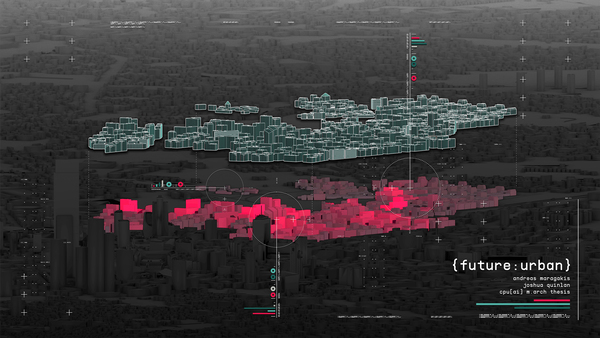Architecture as a discipline often finds itself in the uncomfortable position of having to adapt to disruptive technological change. The responsibilities of an architect never seem to be static. My belief (which frames my design philosophy and my masters thesis) is that we are on the brink of witnessing a further paradigm shift as we see society progress to adopt artificial intelligences as commonplace tools.
I believe architects must adapt by beginning to develop computational design tools that can process information much more efficiently than a human designer. While these design tools could be seen as superceding the architect in some quantitative aspects of work - such as laborious data entry or demographic analysis - computation becomes a design collaborator and allows the architect to focus more on qualitative aspects of design.
My masters thesis, a joint project with Joshua Quinlan, explores this idea through the development of a massing tool for large-scale urban developments. As an exercise in to what extent the urban form can be quantified and what correlations can be drawn between these quantified urban characteristics and their impact on the potential for environmental performance, we have concluded that the development of tools such as this can accelerate strategic briefing and preliminary evaluation stages.


